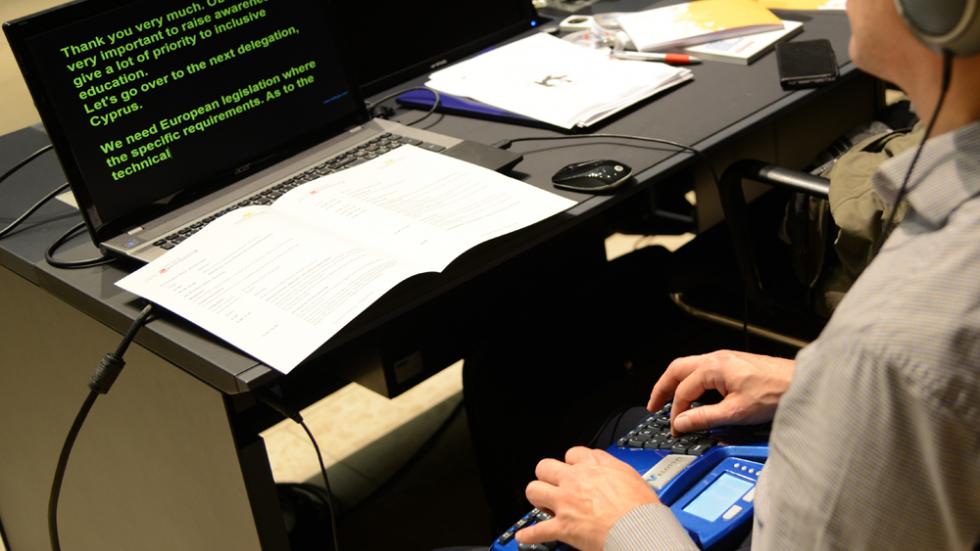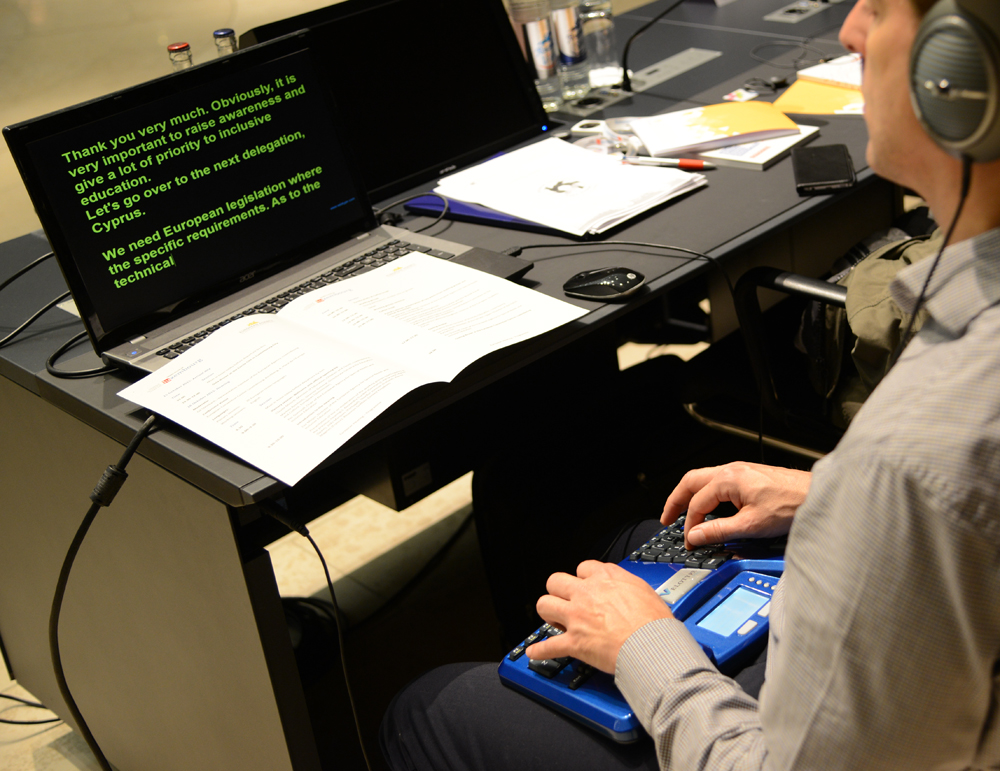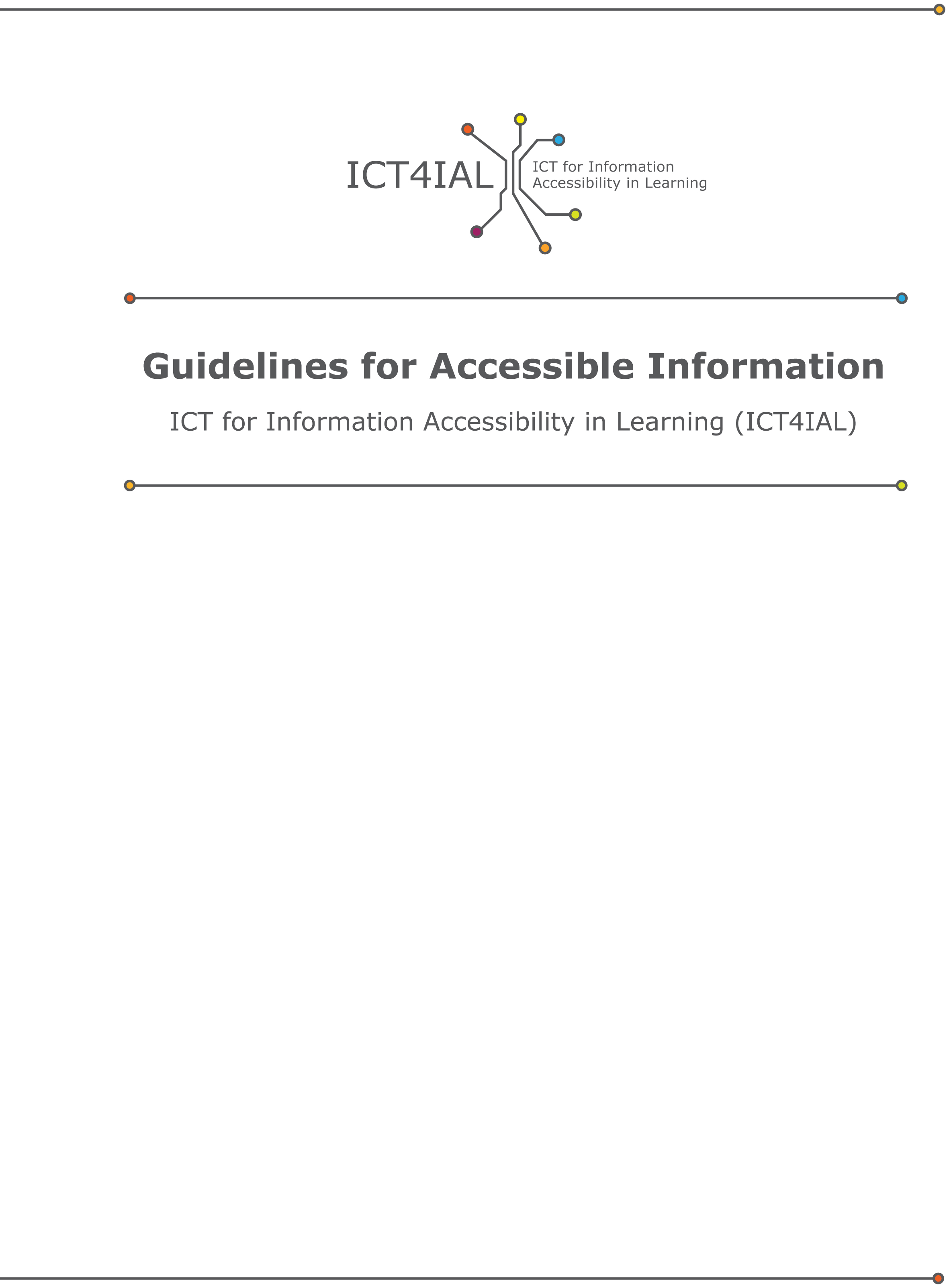The Agency has formalised its vision of becoming a role model of accessibility and inclusive practice by presenting its Accessibility policy to its member country representatives at the October bi-annual meeting in Vienna. The main goal of this policy is to provide a fully accessible experience of the Agency and all its activities.
The Agency Accessibility Policy is in line with the United Nations Convention on the Rights of Persons with Disabilities (UNCRPD definition of ‘accessibility’ (UN, 2006). Although the UNCRPD is addressed to State Parties, the Agency sees the accessibility of the physical environment, of working processes and of information and communication technologies as one of its own central responsibilities.
The policy is also in line with European Union (EU) guiding principles and directives, including the European Disability Strategy 2010-2020, EU Directive 2016/2102, EU Directive 2017/1564 and Directive 2001/29/EC.
Once published, the Agency’s work on accessibility will also be guided by the new EU Directive of the European Parliament and of the Council on the approximation of the laws, regulations and administrative provisions of the Member States as regards the accessibility requirements for products and services.
The Agency understands its vision of accessibility to be a developmental process. This process will require constant review to monitor progress and developments in knowledge of best practice for accessibility. While acknowledging that accessibility is not identical to usability, the Agency understands true accessibility also includes aspects of usability as far as possible.
The Accessibility Policy’s six main aims
- Objective 1. The Agency will disseminate all information and produce all materials in an accessible format, as well as provide only accessible ICT tools and solutions, for both internal and external use.
- Objective 2. The Agency website will continue to be a model of accessibility by adhering to international standards and by not only informing users about accessibility features, but also openly encouraging feedback on accessibility.
- Objective 3. All Agency meetings will provide an accessible experience for all participants, from the planning phase to the meeting follow-up. This includes both access to information and information technologies, as well as physical access to every location and activity.
- Objective 4. The Agency will only procure goods or services which adhere to accessibility criteria.
- Objective 5.The Agency will develop its accessibility support within the team, including developing a statement/policy on inclusion informing country representatives and staff members on the expected procedure if they develop a special need.
- Objective 6. The Agency will continuously support and, at regular intervals, monitor all activities related to improving the accessibility of the Agency.
Adopting this accessibility policy is an important Agency milestone and work has now started on developing a plan for implementing it.
For further information, please consult https://www.european-agency.org/accessibility-policy


